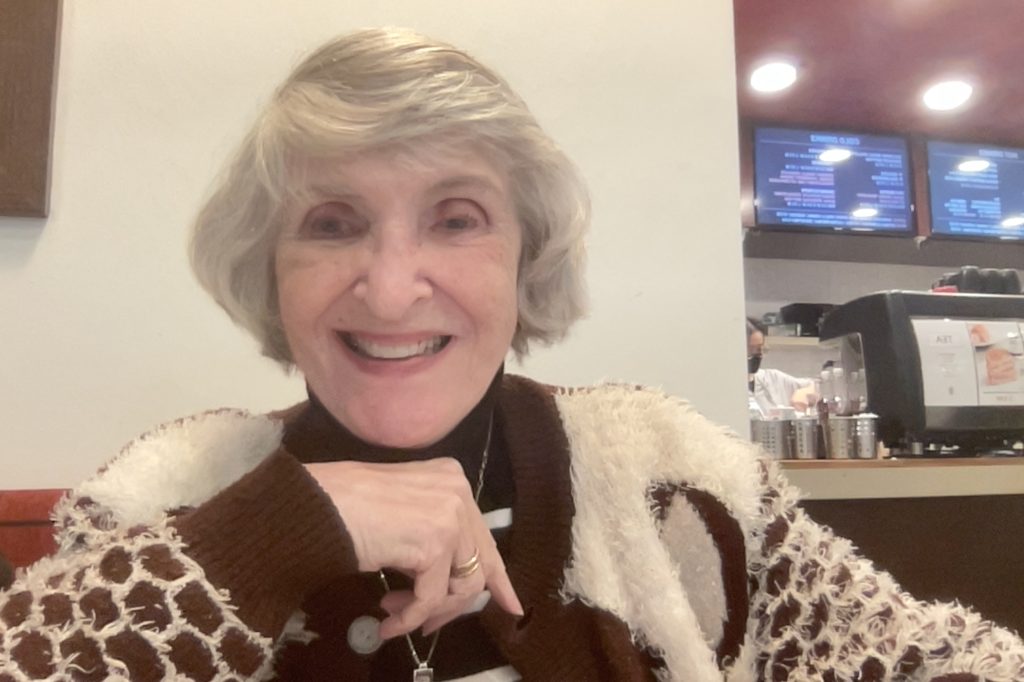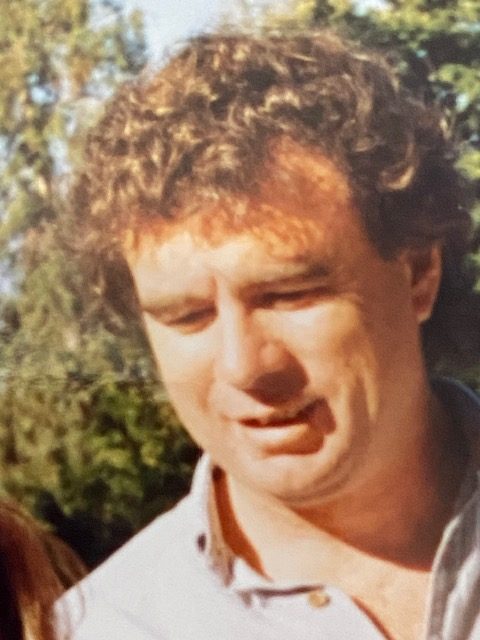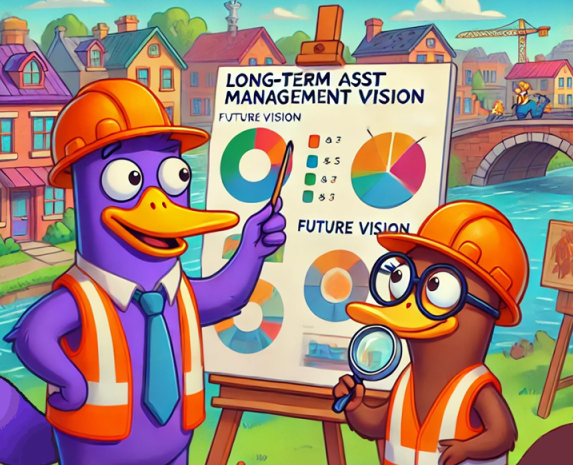
ID 26212151 | Child In Shallow © Pavla Zakova | Dreamstime.com
When we look back at the history of Asset Management, there is one curious feature.
In a world in which many people go on about data, many act like the revolution of AM is the discovery of asset data.
Why?
Penny many years ago made the point – well, that the point is making better long-term decisions about assets. Wave 1, ‘asset inventory’, only has any value when we use such data to make better decisions, in Penny’s Wave 2: strategic asset management. As Penny says, when you focus on the decisions, you have a much clearer idea of what data you actually need. Wave 2 improves Wave 1.
But there must be some kind of reason why organisations seem to have to go through Wave 1, collecting and organising data, first.
Cynically, we might think it’s because it’s easier than questioning decision-making: something middle level asset managers can do without challenging business at the top level. Or, and/or, there are plenty of suppliers willing to sell you help in collecting data or implementing the transactional IT systems to put it in. Few that actually know how to make better decisions.
But I come to suspect that, weirdly, asset-centric data is more radical than it sounds. What suggests this is how hard other teams kick and scream about collecting and handing on asset inventory, the very basic data on what assets we have where. (Capital projects, IT, even some maintenance teams.)
It doesn’t seem to help to stress that we cannot manage what we don’t know we have. Is the problem that they don’t understand that we do have to continue to manage assets into the future?
Or is it – back to basics – that the whole concept of an asset is the first revolution?
Other people manage projects, budgets, sites, even value on the balance sheet. Only Asset Management believes the fundamental unit of management is the operational asset.
Can we rewrite the advice on implementing Asset Management to get us to decisions faster?
Are too many organisations still not making that very first leap into the water?

The Board of Talking Infrastructure wants to thank Penny – wants to make a big, big fuss over Penny – for the immensity of what she means to us and to Asset Management.
All of us had our lives and careers changed by Penny. Without her, we wouldn’t be calling ourselves asset managers, for a start. We are doubly blessed that she is also a great friend to each of us individually.
I first knew of Penny when another important AM person in my life, David Ford, came back from a trip to Australia and New Zealand in 2001 clutching a copy both of the International Infrastructure Management Manual and an issue of Penny’s Strategic Asset Management newlsetter. Saying there were some things we therefore would not have to make ourselves, and anyway could never have done so well.
I already was sure when I met Penny in person in 2004 at ICOMS we would be fast friends, going to stay with her and Bob in Adelaide on the MESA ‘eminent speaker’ tour that summer. My life certainly was never the same after that, as the next year I went back to work with her on a job for NSW Rail Corps… and the year after to live in Sydney. Where she and I could plot some more, ending up eventually with Talking Infrastructure itself.
Of course, the price I paid for her continuous inspiration was knowing I would always been running to catch up – sometimes several large steps behind her thinking. But that was always so much fun.
One thing I am most proud of is spreading her words around North America, making sure new assets managers knew who she was and her vision for infrastructure Asset Management. She has quite a fan club of younger women around the globe, including the USA. I would like to claim I am fan #1, but there are many pioneers in the queue ahead of me.
Talking Infrastructure would like to publish your memories and appeciation of Penny. When did you first come across her? Where did you take the ideas she inspired?

I have retired.
I thought I could never retire, but I have. I am still greatly interested in issues facing those who have to make decisions on our infrastructure but for Talking Infrastructure to continue and expand I have handed the reigns over to my younger board members and activists. They will now determine its future directions and I will watch with pride.
This does, however, free me up to turn my original website, amqi.com, created back in 1998, into something more than the redirection signpost it has been since creating Talking Infrastructure in 2016. With encouragement from our IT Director, Gregory Punshon, and our Lead Director, Ruth Wallsgrove, I am creating “Penny’s Place” on amqi.com which, when finished, will become an integral part of Talking Infrastructure. I will be unploading all 400 issues of Strategic Asset Management which were originally published between 1998 and 2014.
The SAM Issues are a great timeline of the issues and the practitioners who led the development of Asset Management over these years.
In addition, I am classifying the major articles, some 1200+ of them, to make your access easier. It is a big job and will take a few months but we will let you know when it is done.
You will be able to see what people were thinking when the practices we take for granted today were first established, why they did them and what they hoped to get out of them. You may even be able to determine where some may have gone off the rails and hopefully then be in a better position to course correct.
Of course, not all the issues we are dealing with today are old issues. Asset Management would be really boring if that were the case.
Its future history is in your hands.

This week my oldest and dearest friend, Bob Ritchie, the Secretary of the PAC, died after a valiant fight against Leukemia. I was able to see him just a few days before he passed on Tuesday last week. His influence on AM was immeasurable, but largely untold.
It was Bob who recognised, 40 years ago, the potential of the work I had done for predicting the likely cost and timing of water and sewer infrastructure renewal to be applied to all major state infrastructure and who convinced the Parliamentary Committee to engage me to do a research project where they had never done one before. He worked with me on all eight reports to Parliament and saw, where I did not, the opportunity of a vaguely defined job vacancy in public works to be converted to, as he put it, ‘anything I wanted’, which I interpreted as the opportunity to spread the AM message Australia-, and indeed, world-, wide.
A few years later he was my major support in developing the International AM Competitions and then again when I started Talking Infrastructure. He was always there, encouraging, supportive. So much he contributed! Yet hardly anyone in the AM community would know his name. True, he featured in ‘The Story of Asset Management‘ as he should, and I am glad I had the opportunity to say Thank You before he died.
Vale Bob Ritchie. 01.02.1942 – 11.03.2025

125348823 | Our History © Jakub Krechowicz | Dreamstime.com
More than a decade ago, Penny Burns set up an AM history group in LinkedIn. Her idea was firstly to collect people’s own stories, of how they came to be involved in Asset Management.
Last year Talking Infrastructure published Penny’s own history, of how she came to create Asset Management in 1984 and her first decade working with it. (The Story of Asset Management.)
From when AM really took off in the 1990s, it’s much harder to collect all the strands, and the stories include many other people. That’s why volume two of the history would look very different.
I am still fascinated by the personal journeys – not least because it brings out what distinguishes AM from other disciplines (why do people leave engineering, for example?)
I also have things when I teach about the wider history, but these really come from the people I have met, that I have happened to meet. And what I remember of what they said twenty or twenty five years ago, that they may not even agree with (or remember in the same way).
And the internet, even with AI, doesn’t cover most of it. We erase it when we rewrite a website, unless we consciously refer to what came before (or look up old sites in an archive project). I cannot find that old LinkedIn group, even though I don’t think anyone actually removed it.
Perhaps it’s natural that some only really think about history, and legacy, as they come to the end of their working lives. When you first meet a topic like Asset Management, you just know it’s there, not where it came from.
But it seems to me that asset managers ought to be interested, because we must have a good sense of time and change to do our jobs. “If you don’t know your history, you don’t know where you’re coming from,” as Bob Marley nearly put it. Understanding what’s happened before is the base material for having any sense of what may happen next, in ideas as well as deterioration curves.
Volume 2 is not yet a project. But Talking Infrastructure is planning longer articles on key topics such as planning and risk, and how to mine SAM newsletter material. Not the final word on anything, probably, but the next word, or part of the picture. A resource that can help us remember.
Watch this site for some more notes on our collective history.
And share your own story and memories of how it evolved for you.

From script by Lou Cripps
The lifecycle-based Asset Management Plan was Penny’s solution to the issue of short-term thinking.
In particular, she wanted us all to look ahead at budget requirements for renewals – replacements and refurbishments of aging assets.
But planning and lifecycle thinking are needed for other challenges, too.
For me, the fundamental point is the importance of thinking ahead. Of being proactive rather than reactive, of exploiting what we already know about our assets to stop being surprised by things we can work out ahead of time.
In a week when many of us are trying not to think about WW3, we know we don’t know everything about the future. But we need to make better use of what we do know.
The problem, 40 years on, is that so many organisations don’t.
Here are just some of the questions I would wish – fairy godmother style – everyone to be able to give better answers to.
- 101, if we think we need to build some new infrastructure asset, what will it cost to maintain and operate it?
- What are the different realistic solution options – and what opportunities will we lose in choosing any of them?
- What’s the evidence that we have understood the problem and scoped our preferred option correctly? What else has to be considered in with the capital cost – like the cost of new facilities when we buy new electric fleet, for example?
- What costs and disbenefits should we also cost into the materials we choose, such as embodied carbon or damage to other communities?
- What costs and disbenefits will continue long after the physical asset is gone (think the loss of species or habitats, long-term damage to communities)?
- Do we really have any fact basis for the costs, risks and benefits of something new, as opposed to sustaining what we have?
All of these are elements of whole life cost modelling. Too bad many organisations still don’t even use basic lifecycle costs for their budgeting or strategies.
The underlying problem… is a system that doesn’t plan for the future. Is it lack of the right skills in the right place, or vested interests? Laziness??
One thing I am pretty sure is that it isn’t a lack of available information.
What do you think: just how bad, on a scale of 1 to 10, are our current infrastructure business cases?
Further good reading: Penny’s Infrastructure: we can afford to buy it, can we afford to keep it? Louise Hart, Procuring Successful Mega-Projects: How to Establish Major Government Contracts Without Ending up in Court. Joseph Berechman, The Infrastructure We Ride On: Decision Making in Transportation Investment.

From script by Lou Cripps
Sometimes, it feels too much to do it all step by step.
Most organisations I work with don’t yet have any asset plans beyond five years. Some still only have annual budgets. How do you add in changing requirements for the longer term if you don’t even ask past five years?
And how many years ago did asset managers realise you can’t plan if you don’t think about where you want to get to? (At least 20, because strategy comes before planning in BSI PAS-55 published in in 2004.) But almost no-one has properly strategic ‘asset strategies’. They literally don’t know where they want to take their assets.
Bit by bit – and maybe getting nowhere fast.
But there is an alternative, maybe. Can we describe a compelling vision of where we want to be, first?
Can we even leapfrog some of the gradualist things we currently do?
Gradualism may be personal preference, or professional training. We haven’t always been bold about our mission. Some of us are detail people.
How would it be if we really believed we have a duty of care to make a big difference to the, frankly, fairly dumb way we’ve conventionally managed infrastructure?
Todd Shepherd and Julie DeYoung describe this as a system thing. What we have is a system, or paradigm, which resists change – so tinkering at the edges doesn’t work, because the old system will just bounce back as soon as you stop pushing.
This is, of course, quite a different concept of ‘system’ from the parts and pieces idea of a ‘quality management’ approach such as ISO 55000, which instead encourages a bit by bit, start with AM policy or SAMP. Better than thinking the first step has to be IT – but possibly no more ‘sticky’.
Quicker, and less heartache, to go for undermining the whole thing with strategy and long-term planning from the start?

from script by Lou Cripps
Just a thought about current Asset Management practice.
One core tool used by many is the maturity assessment or gap analysis. See, for example, the Institute of Asset Management’s SAM+ tool.
The concept here is to audit an organisation against a standard, recognise its shortfalls against that standard, and recommend actions to close the gaps – in an implementation plan often referred to as the Asset Management roadmap. The standard could be ISO 55000 series, or perhaps more usefully the 39/now 40 subjects in the GFMAM Asset Management Landscape.
ISO 55000 has some oddities (don’t get me started here on the terms ‘SAMP’ and ‘asset management plans’), but the involvement of far more people in the revision in 2024 probably makes its coverage more realistic.
The problem with the world of AM assessments and roadmaps isn’t fundamentally which topics we assess.
It’s that we simply don’t take our own principles seriously.
Alignment with organisational objectives is surely the key organising concept in ISO 55000. And yet we still propose AM implementation against standards – rather than our corporate priorities.
We also have a history collectively of ridiculous outputs, roadmaps that detail 70 or 130 different actions, for AM teams of perhaps 2 or 3 people to implement in the next 2 years – as though we had no experience, no common sense of what it’s like to implement major change. Almost as though we aren’t taking the AM Landscape ‘red box’ Organisation & People into account at all.
In Asset Management, there isn’t a ‘right’ way to do everything. That’s engineer talk. The optimal way forward is the best realistic option for us, for where we are now, for what our organisations are trying to achieve.
Sure, there are some things which are probably always a bad idea to do, and some that are usually good. But it’s not about a set of rules. Not a template we can fill in, leaving our brains in a jar somewhere.
Whatever we call it, a top-level strategy for Asset Management is essential. But it only makes any sense as a case for how AM will contribute to our organisational targets and challenges. And the practical actions that will do most to support the overall business strategy.
Yeah, the answer is almost always going to be a better planning process for our assets.
But if we start by taking something from inside AM, like ISO 55000 or GFMAM 40 Subjects, and use that as a basis to propose priorities for implementation, we are doing what asset people have too often done before.
Ignoring the business priorities. Not being aligned, right from the start.
Instead, the first thing is to make sure we really understand the organisational challenges, by talking with the people at the top. They won’t always be crystal clear, but that’s the right terrain to start with. Perhaps we’ll even be able to assist in articulating the challenges.
Then talk about what we can realistically do with AM to meet them.*

The gap assessment we require is the gap between what AM could usefully do for our organisation and what we are actually achieving at the moment.
*In my mind, there is very little chance that the corporate priorities for infrastructure won’t require good Asset Management, urgently. We are definitely not at risk of talking ourselves out of a job.

Just a reflection on our own institutions.
I have been involved with the IAM on and off for almost 25 years. I attended Asset Management Council meetings and conferences (under different names) when I lived and worked in Australia in the 2000s. I have been impressed by the IPWEA since someone brought back a copy of the IIMM to the UK around 2001. My boss was instrumental in setting up the GFMAM.
These are just the most obvious AM institutions. (But shout out to Canadian AM networking here, too.)
They have not always been particularly friendly to each other, but at roughly 30 years old at their oldest, we seem to have developed some institutional maturity.
I was heartened to realise that, for all its limits – well delineated by Richard Edwards and others at the recent IAM UK conference – the revisions and new ISO 55000 documents involved hugely more people this time around.
The IAM itself has grown and now functions in more European and Asian countries, as well as succeeding in the USA; it has a truly excellent CEO in Ursula Bryan. I love the IPWEA ‘Ask Your Mates’, the kind of practical support we need from out networking.
But perhaps the best sign of all was a workshop last month on ‘Peak Infrastructure?’. A room full of Asset Managers asking what infrastructure we really need. And how there is work still to be done to make a lasting difference. Changing national government policies not to incentivise (or give in to developers and construction companies) building new when we can maintain what we have.
All physical assets come at a cost, often a very steep one in impact on the environment and communities. We have to take the lead to make sure we understand costs versus benefits.
That’s the real question when we get together as Asset Managers.
*IAM: Institute of Asset Management, HQ in UK. IPWEA: Institute of Public Works Engineering Australasia. GFMAM: Global Forum on Maintenance and Asset Management, established by the IAM, Asset Management Council and others. Asset Management Council in Australia. Canadian Network of Asset Managers, plus Provincial AM networks such as AMBC and AMOntario.

At this end of 2024, I am more convinced than ever that the whole point of Asset Management is Planning.
Planning, as opposed to delivery – which we have been doing for decades, if not centuries. Asset Management is about thinking through what we need to deliver across our asset base, Plan before Do. (Don’t just do something, sit there.)
That is what Penny created Asset Management for.
And the central concept was lifecycle modelling, supported by cost-risk-optimisation, matched to understanding demand. When is the right time to replace, renew, maintain? What don’t we need to do?
The AMP has been the centre of Asset Management since the very beginning. As captured in state and federal requirements, as documented in the International Infrastructure Management Manual from the IPWEA.
We need Planning – and it is not going to happen without us.
But it is too often still – after 40 years! – fragmentary, driven by vested interests (even the understandable wish by people on the ground to get money for their own assets).
It doesn’t look at what happens next: ‘And then what?’
And I can count the organisations I work with that actually do lifecycle cost modelling or cost-risk optimisation on the fingers of two hands.
To do the maths on all the major costs, risks and benefits of different options across the lifecycle, and demonstrate that (for example) building back rural roads like for like after they have been washed away for the fourth time in five years simply doesn’t add up.
Time for a Campaign for Honest Asset Management Planning?

Recent Comments